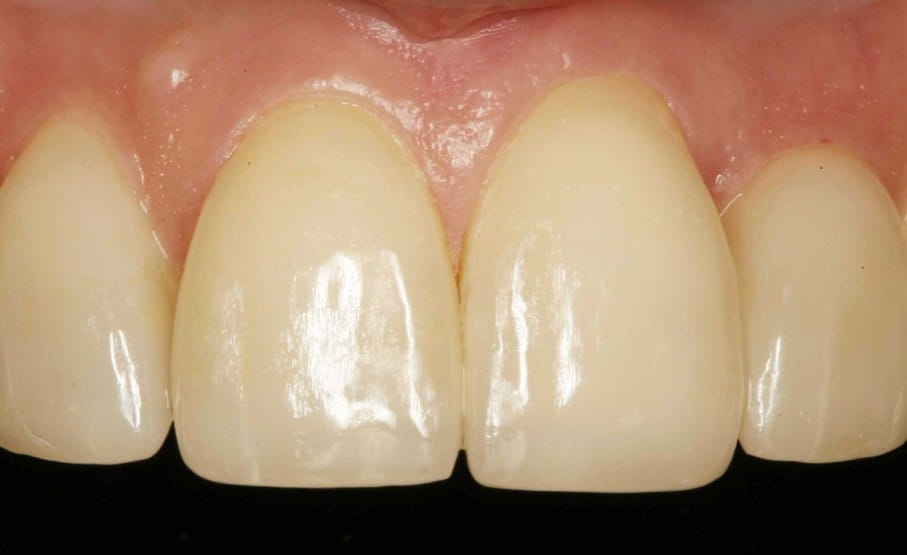Dental veneers

Veneers are small, extremely thin shells that are bonded to the outer surface of the teeth. Dental veneers meet the growing aesthetic demands of our patients.
They enable us to restore or perfect tooth morphology and shade, in a durable, conservative and natural way.
They are made of composite resin or ceramic. A distinction is made between “direct” veneers, which are shaped in the mouth, and “indirect” veneers, which are fabricated outside the mouth before being bonded to the teeth.
The direct technique uses composite resin, and sometimes prefabricated shells made of already polymerized (cured) composite resin. The direct variant is more economical than indirect techniques, delivering satisfactory aesthetic results but generally not as long-lasting as some indirect veneers. This technique can be advantageously used in situations where perfection and longevity are not essential, for example in young patients with a troublesome dental defect whose definitive treatment will be undertaken in adulthood. Indirect veneers, on the other hand, are made of ceramic (feldspathic ceramic, lithium disilicate ceramic, zirconia) or composite resin shaped by the dental technician or milled by a robotized machine from an already polymerized block. In this respect, it’s worth noting that spectacular technical advances in the digitization of treatment processes now offer a choice between conventional dental impressions with silicone paste, or a scan of the dental arches using a 3D camera.

The veneers are then fabricated in a variety of ways, ranging from “all manual” to “almost all digital”. Today, very fine results can be achieved with digital techniques. The ultimate in aesthetics, however, is still the veneer handmade in feldspathic ceramic by the experienced dental technician.

Veneer treatment fits in perfectly with today’s minimally invasive treatment philosophy, as it is very economical in terms of healthy tooth substance for the teeth concerned, since preparation of the tooth to receive the veneer requires only minimal, superficial trimming, usually limited to the enamel. In certain favourable situations, it may even be possible to leave the teeth to be veneered untouched (No-Prep veneers).
In addition to improving the overall aesthetics of the smile, veneers can be used for a number of other purposes. For example, they can be used to rejuvenate teeth worn down by time, to close gaps or to transform tooth shapes when a tooth shows an anomaly in shape or length. They are also used to restore traumatized teeth, when direct reconstruction with composite resin is not sufficient.
Veneers can be combined with other treatments to guarantee the best possible result. For example, veneers can be combined with tooth whitening, orthodontic treatment or gum surgery.

The contraindications to this technique are well established and guarantee good long-term results. Situations requiring caution include patients with severe bruxism, or dental defects compromising bonding (extensive enamel defects). Nonetheless, specific measures (such as the use of a night guard) generally enable the veneering technique to be applied with peace of mind.
The maintenance of such restorations requires good dental hygiene, as for any other tooth, with twice-daily brushing and daily use of interdental aids (interdental floss, brushes), as well as regular check-ups with your dentist.
Before and after photos



